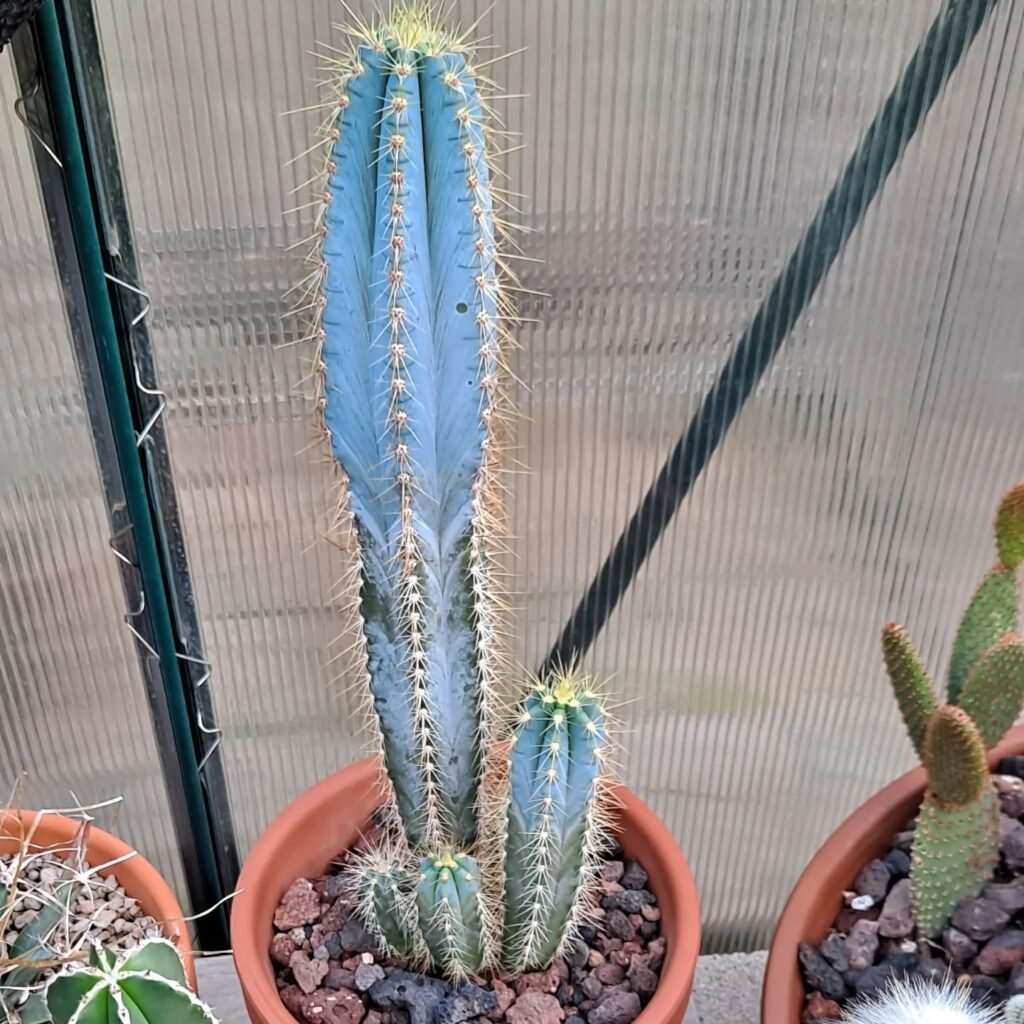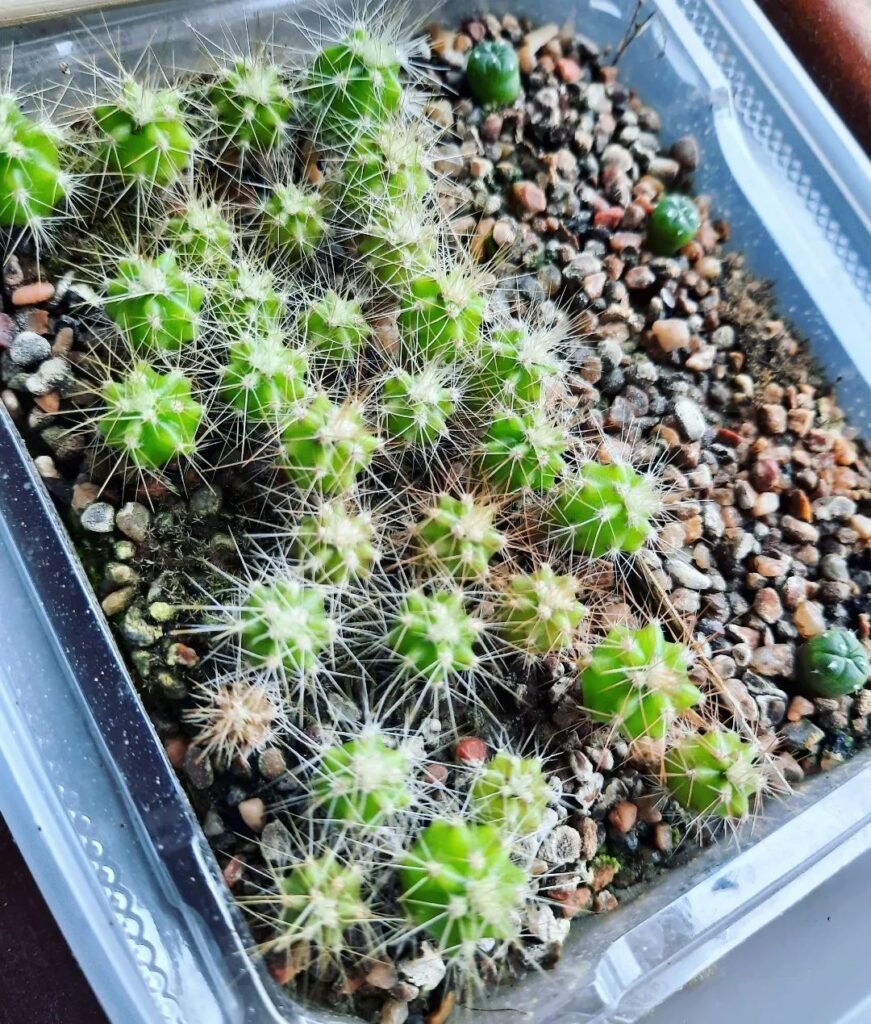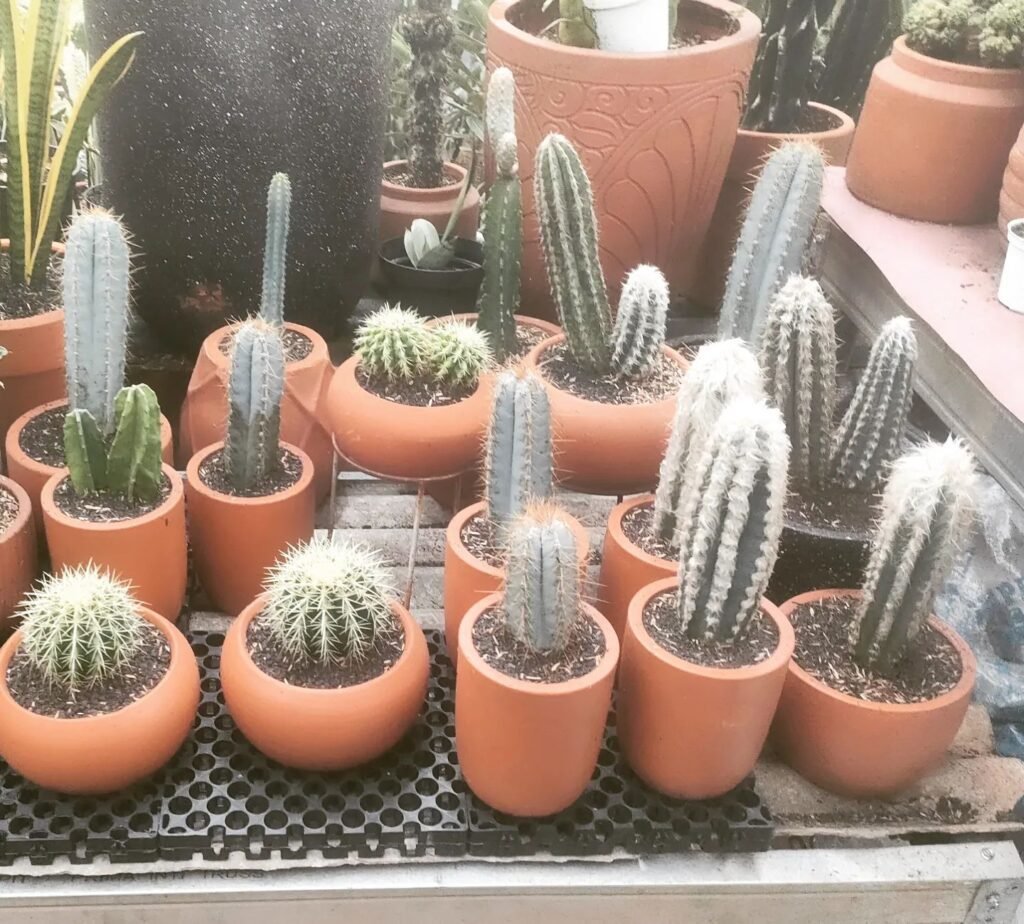Have you ever heard of the Blue Torch Cactus or, as the experts call it, Pilosocereus Azureus? This remarkable cactus is a true showstopper in the world of succulents. Why, you ask? Well, it’s all thanks to its dazzling blue hue and majestic column-like structure.
Hailing from the sunny lands of Brazil, this cactus has quickly become a favourite among gardeners and plant lovers. And it’s easy to see why! Its unique appearance is a breath of fresh air compared to the usual greens we’re used to in our gardens. Plus, it’s surprisingly easy to look after, which is always a bonus, especially if you’re just starting on your gardening journey.
Getting to Know the Blue Torch Cactus (Pilosocereus Azureus)


Alright, let’s chat about one of the most striking plants you could welcome into your garden – the Blue Torch Cactus, or Pilosocereus Azureus. It’s a bit of a tongue-twister, isn’t it? But don’t worry, its care is much simpler than pronouncing its name!
This cactus is quite the standout, and here’s why:
- A Splash of Blue: The first thing you’ll notice about the Blue Torch Cactus is its stunning blue colour. It’s not every day you see a cactus that looks like it’s borrowed a bit of the sky! This unique blue-green tint makes it a real gem among succulents.
- Tall and Statuesque: This cactus doesn’t just sit quietly in the corner. Oh no, it grows tall and proud. In its natural habitat, it can reach up to 4.5 meters! That’s like having a small tree indoors. Even in your garden or pot, it makes quite the statement with its impressive height.
- Columnar and Proud: With its column-like shape, the Blue Torch Cactus brings a touch of architectural elegance to any space. It grows upwards, straight and narrow, like a living sculpture.
- Spines and More: Like many cacti, it does have spines. They’re long and can be quite sharp, so it’s best to be a bit careful when moving it about. But these spines add to its character, giving it a wild, untamed look.
- A Gradual Transformation: Here’s a little secret – as the Blue Torch Cactus ages, it becomes even more beautiful. The blue hue deepens over time, and the cactus might develop a curvy shape, adding to its visual appeal.
- Night Bloomer: For those who love a good surprise, this cactus occasionally graces us with flowers, usually blooming at night. These are a lovely sight, adding a different dimension to its beauty.
In a nutshell, the Blue Torch Cactus isn’t just another plant. It’s a statement piece, a conversation starter, and a delightful addition to any plant collection, especially if you fancy something a bit out of the ordinary.
The Right Light for Your Blue Torch Cactus


Now, if you’re wondering how much sun your new Blue Torch Cactus needs, you’re asking the right question. After all, light is like food for plants. Here’s the lowdown on keeping your cactus happy with just the right amount of sunshine:
- Sunshine Lover: The Blue Torch Cactus loves the sun, much like a sunbather at the beach. It thrives in bright light conditions. So, if you’re growing it indoors, placing it near a window that gets plenty of sunlight is a brilliant idea. A south-facing window would be perfect.
- Direct or Indirect?: Ideally, this cactus prefers direct sunlight. However, if you live somewhere particularly sunny, a bit of indirect light won’t hurt, especially during the hottest part of the day. This helps prevent any sunburn, yes, plants can get sunburnt too!
- Outdoor Sunbathing: If your cactus is living outdoors, find a spot that gets a generous amount of sunlight. It’s quite adaptable and can handle the heat, but again, a little afternoon shade in extremely hot climates can be beneficial.
- Not Enough Light?: If you notice your cactus starting to stretch out or lean towards the light (we call this etiolation), it’s craving more sunlight. This is its way of saying, “Please move me where it’s brighter!”
- Winter Sun: During winter, when the sun plays hide and seek, try to keep your cactus in a spot that still gets the most light. These guys are pretty tough, but they do appreciate consistency in their light diet.
Remember, the Blue Torch Cactus is like that friend who loves sunny days at the beach. Give it the light it adores, and it will show its gratitude by growing strong and healthy.

Watering Tips for Pilosocereus Azureus (Blue Torch Cactus)


Watering your plants can sometimes feel like a bit of a mystery, can’t it? Too much, too little – it’s all about finding that sweet spot. And when it comes to the Blue Torch Cactus, it’s no different. Here are some easy tips to ensure you’re giving your cactus just the right amount of water:
- The Golden Rule – ‘Soak and Dry’: The best approach for watering your Blue Torch Cactus is the ‘soak and dry’ method. This means you should give it a good drink, allowing the water to drain out fully, and then wait until the soil is completely dry before watering again.
- How Often?: This depends on where you keep your cactus and the time of year. During the growing season (spring and summer), you’ll likely need to water it every couple of weeks. But come winter, when the cactus is taking it easy, you can cut back on watering to maybe once a month.
- Checking the Soil: Before you grab that watering can, do a quick soil check. If the top inch of the soil feels dry to the touch, it’s time to water. This little test helps you avoid overwatering, which is a big no-no for cacti.
- Signs of Thirst: Keep an eye out for signs that your cactus needs water. If it starts to look a bit shriveled or the color seems off, it might be telling you it’s thirsty.
- Avoiding Wet Feet: Overwatering can lead to root rot, so make sure your cactus pot has good drainage. This helps any excess water escape, keeping your cactus’s roots happy and healthy.
- Quality, Not Just Quantity: When you water, do it thoroughly. Make sure the water reaches the entire root system. A little sip here and there isn’t going to cut it. Think of it like a hearty meal rather than just a snack.
Remember, it’s better to under-water than over-water. These cacti are pretty hardy and can forgive the occasional missed watering, but they won’t be too happy with wet feet!

Fertilizing and Choosing the Right Soil for Your Blue Torch Cactus


When it comes to keeping your Blue Torch Cactus happy, the soil it calls home and the food you give it (a.k.a. fertilizer) play big roles. Let’s break this down into easy-to-understand bits:
Fertilizing: A Little Goes a Long Way
- Not a Big Eater: Your Blue Torch Cactus isn’t a greedy plant. It doesn’t need a lot of fertilizer. In fact, it’s quite low-maintenance in this department.
- When to Fertilize: The best time to give your cactus a bit of a feed is during the growing season, which is spring and summer. During winter, it’s having a rest, so you can skip the fertilizer.
- What to Use: A balanced cactus fertilizer is your best bet. You can find these at your local garden center. Just follow the instructions on the label, and remember, it’s better to under-fertilize than overdo it.
The Right Soil: It’s All About Drainage
- Well-Draining Mix: The key to a happy Blue Torch Cactus is well-draining soil. You want to avoid waterlogging its roots at all costs.
- DIY Mix: If you’re feeling adventurous, you can make your own cactus soil mix. Just mix equal parts of potting soil, coarse sand, and perlite or pumice. This creates a loose, airy mix that drains well.
- Store-Bought Options: Not into mixing your own soil? No problem. There are plenty of ready-made cactus and succulent mixes available that will do the job just fine.
- pH Level: Ideally, aim for a soil pH of around 6.1 to 7.3. This slightly acidic to neutral range is just right for the Blue Torch Cactus.
By getting the fertilizing and soil right, you’re setting up your Blue Torch Cactus for success. It’s all about creating the perfect environment for it to thrive – not too much food, and just the right kind of earth under its feet.

Pruning and Maintenance for Your Blue Torch Cactus


Taking care of a Blue Torch Cactus isn’t a big hassle, especially when it comes to pruning and maintenance. These plants are pretty self-sufficient, but here are a few tips to keep them looking their best:
Pruning: Less is More
- Minimal Pruning Needed: The good news is, your Blue Torch Cactus won’t need much pruning. These plants generally take care of themselves.
- When to Prune: If you do notice any dead or damaged parts – maybe a broken spine or a discolored section – you can gently remove these. Just be sure to use gloves, as those spines can be sharp!
- Keeping It Tidy: Occasionally, you might want to shape your cactus or control its size, especially if it’s indoors. Just trim carefully, focusing on removing only the necessary parts.
Maintenance: Easy Does It
- Regular Check-ups: Give your cactus a once-over every now and then. Look out for signs of pests or any unusual spots or growths.
- Pest Control: If you do come across pests like mealybugs or aphids, you can gently wipe them off with a cotton swab dipped in rubbing alcohol.
- Let it Breathe: Ensure your cactus has enough air circulation around it, especially if it’s indoors. This helps prevent any moisture-related issues.
- Repotting: Every couple of years, you might want to consider repotting your Blue Torch Cactus, especially if it’s outgrown its current home. Choose a pot that’s slightly larger with good drainage.
And there you have it – simple pruning and maintenance tips for your Blue Torch Cactus. A little attention goes a long way in keeping this stunning plant healthy and vibrant.

Propagating the Blue Torch Cactus (Pilosocereus Azureus)


Expanding your collection of Blue Torch Cacti is quite straightforward. Propagation is a fun and rewarding way to get more of these stunning plants. Here’s how you can do it:
Propagation by Stem Cuttings
- Choose the Right Time: The best time to propagate your cactus is during the warmer months, ideally in spring or early summer.
- Select a Healthy Stem: Look for a healthy, mature stem on your cactus. This will be your cutting.
- Make the Cut: Using a clean, sharp knife, cut a piece of the stem. The cutting should be about 4-6 inches long.
- Let it Dry: Place the cutting in a dry, shaded area for a few days to a week. This allows the cut end to form a callous, which helps prevent rotting.
- Potting the Cutting: Once the cut end has calloused, plant the cutting in a pot filled with well-draining cactus soil mix. Stick the calloused end into the soil.
- Water Sparingly: Water the cutting lightly. Remember, the soil should be moist but not soggy.
- Wait for Roots: In a few weeks, the cutting should start to develop roots. Be patient, as this can take some time.
Propagation by Seeds (Less Common)
- Harvesting Seeds: If your cactus has bloomed and produced fruit, you can collect seeds from the ripe fruit.
- Planting the Seeds: Plant the seeds in a well-draining cactus mix. Cover the pot with plastic to create a greenhouse effect.
- Germination: Keep the soil slightly moist and place the pot in a warm, bright spot (but not in direct sunlight). Germination can take a few weeks or longer.
- Caring for Seedlings: Once the seedlings appear, gradually introduce them to more light and reduce the humidity.
And there you have it! Whether you choose stem cuttings or seeds, propagating your Blue Torch Cactus can be a delightful project. With a bit of patience and care, you’ll soon have new cacti to add to your collection or share with friends.

Potting and Repotting Your Blue Torch Cactus

Whether you’ve just brought home a new Blue Torch Cactus or it’s time to give your existing one a new home, potting and repotting are important steps. Here’s how you can do it right:
Choosing the Right Pot
- Drainage is Key: Make sure the pot you choose has good drainage holes. Cacti don’t like sitting in water, and well-drained pots prevent waterlogging.
- Material Matters: Terracotta or clay pots are great choices because they allow soil to dry out more evenly and help prevent overwatering.
- Size It Up: The pot should be slightly larger than the cactus’s root ball. A pot that’s too large can hold excess moisture, leading to root rot.
The Repotting Process
- Timing: The best time to repot is during the cactus’s active growth period, which is usually in the spring or early summer.
- Gentle Handling: When removing your cactus from its old pot, be gentle. Use gloves or wrap the cactus in a thick layer of newspaper to protect your hands from the spines.
- Check the Roots: Before potting, inspect the roots. Trim any dead or rotting roots with a clean, sharp tool.
- Fresh Soil: Use a fresh, well-draining cactus mix when repotting. You can buy a pre-made mix or make your own by mixing regular potting soil with sand and perlite.
- Positioning: Place the cactus in the new pot and fill around it with soil. The base of the cactus should be at the same level it was in the old pot.
- First Watering: Wait a few days before watering your newly potted cactus. This gives the roots time to heal from any damage during repotting.
Aftercare
- Light: Keep the cactus in a bright spot, but avoid direct sunlight for a few days after repotting.
- Watering Routine: Resume your normal watering routine once the cactus has settled in its new pot. Remember the ‘soak and dry’ method.
Repotting might sound daunting, but it’s actually quite straightforward. With these tips, your Blue Torch Cactus will continue to thrive and grow in its new home.
 Blue Torch Cactus (Pilosocereus Azureus) stands out with its stunning blue-green stems. Native to Brazil, this cactus can reach impressive heights of up to 30 feet in its natural habitat, resembling a ‘blue torch’ against the sky.
Blue Torch Cactus (Pilosocereus Azureus) stands out with its stunning blue-green stems. Native to Brazil, this cactus can reach impressive heights of up to 30 feet in its natural habitat, resembling a ‘blue torch’ against the sky.
Why the Blue Torch Cactus Is a Must-Have in UK Gardens
The Blue Torch Cactus, with its unique charm and easy-care nature, is quickly becoming a favourite in UK gardens and homes. Here’s a look at why this beautiful cactus is capturing the hearts of British plant enthusiasts:
Easy to Care For
- Low Maintenance: One of the biggest draws of the Blue Torch Cactus is its low-maintenance nature. It’s perfect for busy folks or those new to gardening who want a touch of green without too much fuss.
- Drought-Tolerant: This cactus is ideal for the UK’s varying weather conditions. It’s quite drought-tolerant, so if the summer turns out to be a scorcher, your Blue Torch Cactus won’t mind a bit.
Aesthetic Appeal
- Striking Appearance: Its stunning blue hue is a real head-turner. This cactus adds an exotic and architectural element to any garden or indoor space.
- Year-Round Interest: Unlike some plants that might lose their appeal outside of the blooming season, the Blue Torch Cactus remains visually interesting throughout the year.
Versatility
- Indoor and Outdoor: Whether you have a sprawling garden or just a cosy indoor space, the Blue Torch Cactus fits right in. It’s as stunning in a pot on a sunny windowsill as it is in an outdoor rockery.
- Companion Planting: It pairs beautifully with other succulents and cacti, making it easy to create an attractive, varied display.
Health and Wellness
- Air Purifying: Like many plants, the Blue Torch Cactus helps purify the air, making it a healthy addition to your home.
- A Touch of Nature: Incorporating plants into your living space has been shown to improve mood and reduce stress, and the Blue Torch Cactus is no exception.
A Growing Trend
- Popularity in the UK: Its rising popularity in the UK can be attributed to its unique look, ease of care, and adaptability to different environments. It’s a plant that makes a statement without requiring extensive gardening skills.
- A Conversation Starter: This cactus often becomes a focal point and a conversation starter, whether it’s part of a larger garden display or a standalone feature in a room.
Check Out These Handy Blue Torch Cactus Videos
Hey there! Fancy a bit of visual learning for taking care of your Blue Torch Cactus? There are loads of fantastic videos out there that can show you the ropes. From watering tips to the right potting techniques, these videos are like having a gardening buddy right there with you.
They’re great for both beginners and seasoned cactus lovers, offering step-by-step guides, practical advice, and maybe even a few laughs along the way. Remember, sometimes seeing is believing (and learning)!
So, grab a cuppa, settle in, and get ready to give your Blue Torch Cactus the TLC it deserves. And hey, don’t forget to bookmark your favourites for easy reference!
- Re Potting A Blue Torch
- Pilosocereus Azureus (Blue Torch Cactus) is in BLOOM
Blue Torch Cactus (Pilosocereus Azureus) FAQ

Hey there, cactus enthusiasts! Got questions about caring for your Blue Torch Cactus? You’re in luck! We’ve put together a handy list of FAQs to help you out. Whether you’re a seasoned gardener or just starting, these answers should cover most of what you need to know about this striking succulent.
Loves lots of sunlight. A sunny spot, like a south-facing window, is ideal.
Not really. It thrives in bright light. Low light can make it leggy and weak.
It’s a tall, striking cactus known for its unique blue hue, native to Brazil.
Water when the top inch of soil is dry. Usually every couple of weeks in summer, less in winter.
A well-draining cactus mix. You can buy one or make your own with potting soil, sand, and perlite.
Not initially, but it grows tall. Ensure it has room to stretch upwards.
Fairly slow. You might see a few inches of growth each year.
Yes, if you live in a warm enough climate. Otherwise, it’s perfect as an indoor plant.
It’s non-toxic, but those spines can be sharp! Keep it away from pets and little ones.
Gently move it to a slightly larger pot with fresh soil every few years.
A balanced cactus fertilizer in spring and summer will do.
It prefers warmth. Protect it from frost and cold drafts.
Soft, mushy stems or rot at the base are common signs.
A healthy Blue Torch Cactus has firm, evenly coloured stems and stands upright.
Yes, by stem cuttings. Let the cut end callous over before planting.
And that’s a wrap on our Blue Torch Cactus FAQs! If your question wasn’t covered, or if you have more specific queries, don’t hesitate to drop them in the comments. I’ll be more than happy to help out. Happy gardening!





